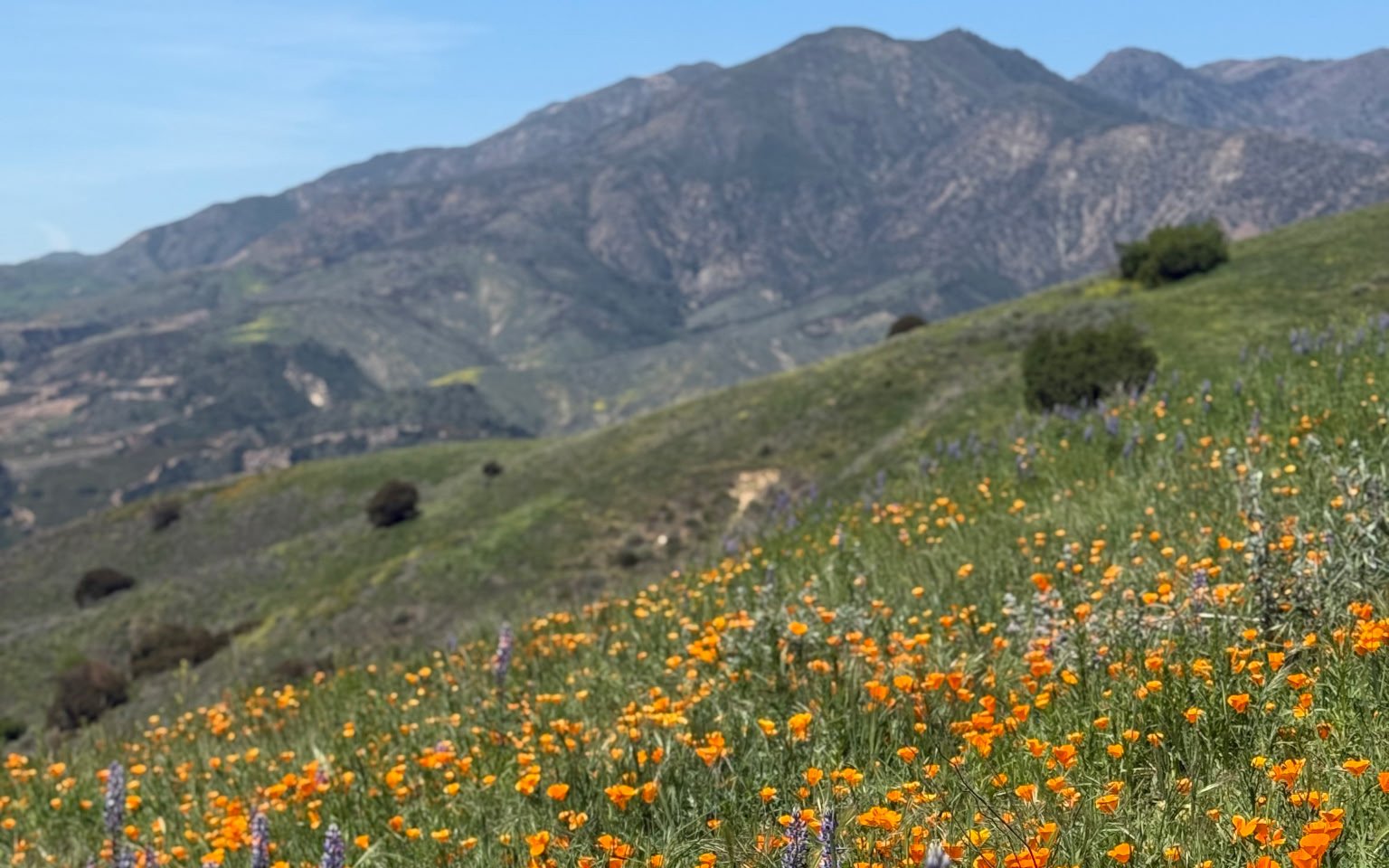Wild Ventura: Protecting the Sespe Foothills
Safeguarding landscape linkages and opening new gateways to nature
California condors seen soaring above the project area and wildflowers abound in the Sespe foothills. Photo by Devlin Gandy.
Tucked into the rolling foothills of Ventura County, where the rugged Topatopa Mountains rise above the Santa Clara River Valley, lies one of Southern California’s most important — but most threatened — wild landscapes. Here, the Sespe Foothills serve as a vital connection between the coast and the interior mountains — a corridor for wildlife and a refuge for rare species. For decades, this landscape has remained largely unprotected, threatened by development and habitat fragmentation.
That’s why a bold conservation effort is now taking shape — an opportunity to safeguard more than 4,200 acres and secure key linkage in this landscape-scale wildlife corridor.
This corridor is more than a scenic backdrop; it is a lifeline for wildlife. The lands provide habitat for more than 40 endangered, threatened, and sensitive species, including Southern steelhead trout, Southwestern pond turtle, arroyo toad, least Bell’s vireo, and California condor — one of the rarest birds in the world, whose recovery story is deeply rooted in the Sespe wilderness. The effort will also safeguard two of Ventura County’s most biodiverse watersheds — Pole Creek and Tom’s Canyon — which flow into Sespe River, one of the last wild, undammed waterways in Southern California and critical habitat for steelhead recovery.
These foothills are part of a broader network of protected wild lands that includes the Santa Monica Mountains, Los Padres National Forest, and the Sespe Wilderness. Conservation scientists have long identified this area as one of the most significant missing linkages in Southern California — a place where protecting just a few thousand acres can restore connectivity across hundreds of thousands of acres of wild lands.
The Sespe Foothills are one of the most important remaining linkages in Southern California. Protecting this corridor is essential to sustain wildlife movement between the coast and the inland mountains.
Kristeen Penrod, Director, SC Wildlands
Just as importantly, this effort opens new doors into nature for people. More than 1.5 million children live within a 90-minute drive of the Sespe Foothills, many from communities that face barriers to outdoor access. Once protected, these lands will offer free public access and outdoor education opportunities — inviting students, families, and visitors to hike, learn, and connect with nature close to home.
As The Wildlands Conservancy celebrates its 30th anniversary, the opportunity to protect the Sespe Foothills reflects an enduring commitment to bold, landscape-scale conservation. This effort is about more than preserving acres — it’s about restoring a living corridor for wildlife and ensuring that the next generation experiences the wonder of Southern California’s wild places.
Wildflowers abound in the Sespe foothills. Photo by Devlin Gandy.


